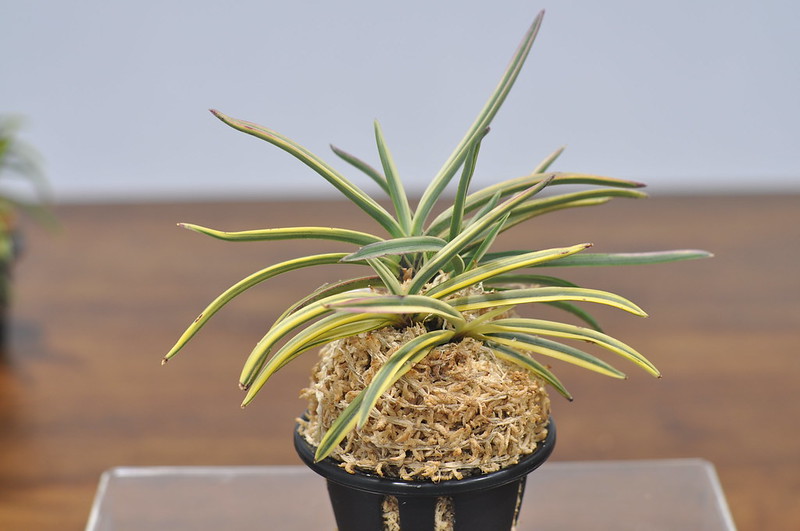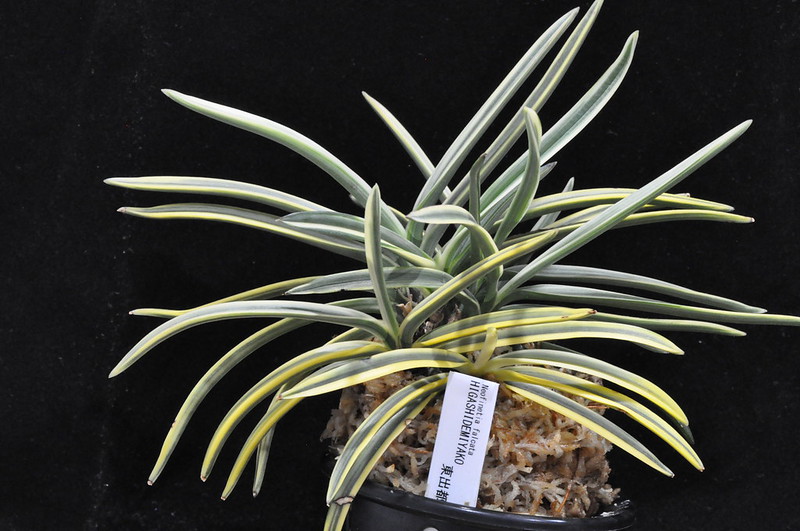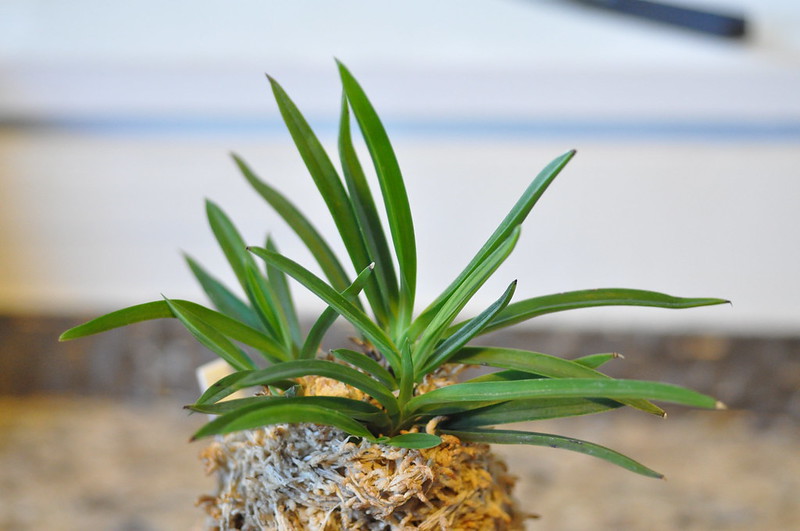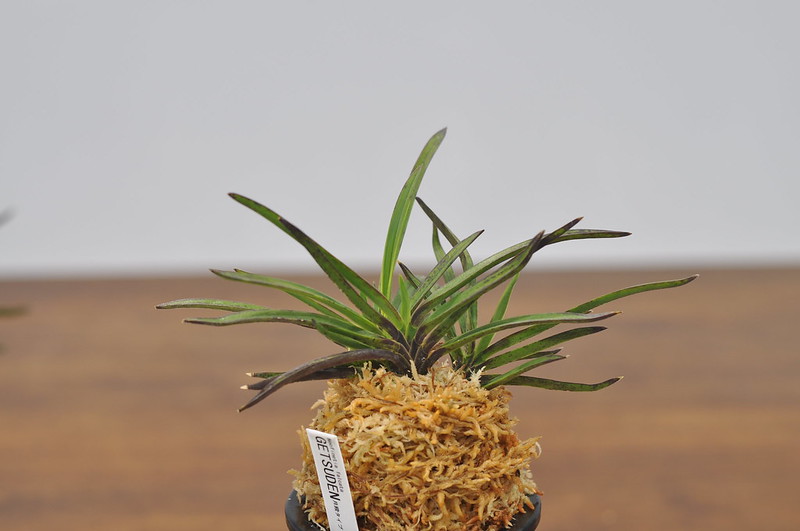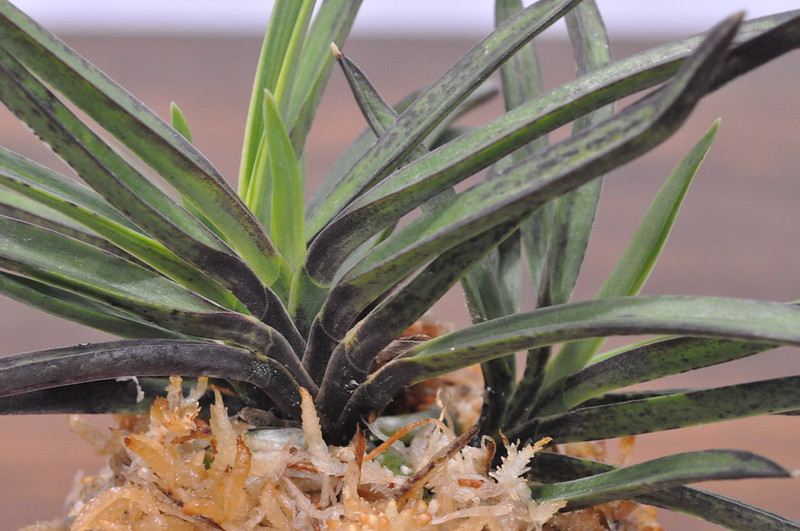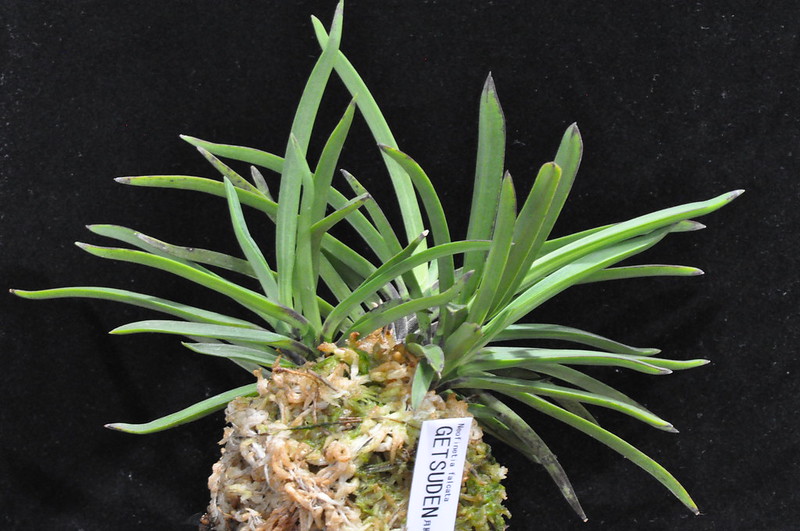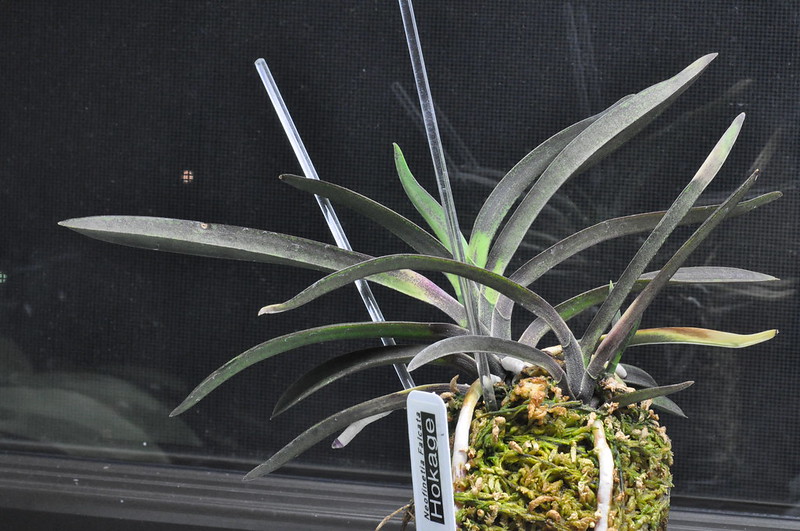Happypaphy7
Paphlover
I'm mainly concerned about tiger and yellow shima.
The simple way I understand is that tiger leaves need more light, and so do the yellow striped varieties, while white tiger or white striped varieties need less light.
Now, for those who successfully grow these varieties, how do you control light level?? and what other factors affect colors on the leaves??
I understand genetics play a great role also.
I'm posting this now after seeing one of my tiger leaf (Kinroukaku) looks like it's ruined.
I have two of them, and each show different amount of yellow on the leaves, which I would regard as genetic in origin because I picked these among a bunch that were grown the same way and all had different amount of yellow. I picked two with the most yellow.
Now, I have had these two guys a little over one year by the south window with sheer curtains. At times, I had them under T8 light, but no longer than three months at a time.
One plant, yellower of the two, still looks the same, while the other one was losing yellow and turning green. I wanted it to have more yellow, so I thought I would try giving it more light and moved this one to the window with sheer curtain. but right up against the glass.
This one yellowed up in just two weeks (the past two weeks recently) but not in the way it should. The entire plant looks as if it is sick. not pretty, then lead tips and edges show strong purple.
I wonder this has anything to do with fertilization (lack of magnesium under cold period on some plants can show purple colors on the leaves I've read)??
The other plant of the same variety is also right up against the window in the south window with sheer curtain with no such reaction.
I have Kogane nishiki that was overall green with very slight yellow cast on only one leaf, and in just two weeks or so by the window (about one foot away from the glass), many leaves are showing yellow cast in a pretty way.
I also have added shima variety (yellow stripes) and not sure how to handle this one. Time will tell, but I would like some feedback and advice as to how to best take care of these variegated neo plants.
I will post pictures of my "funny" looking, rather worrisome Kinroukaku, which I just moved to under T8. I hope the color returns normal.
The simple way I understand is that tiger leaves need more light, and so do the yellow striped varieties, while white tiger or white striped varieties need less light.
Now, for those who successfully grow these varieties, how do you control light level?? and what other factors affect colors on the leaves??
I understand genetics play a great role also.
I'm posting this now after seeing one of my tiger leaf (Kinroukaku) looks like it's ruined.
I have two of them, and each show different amount of yellow on the leaves, which I would regard as genetic in origin because I picked these among a bunch that were grown the same way and all had different amount of yellow. I picked two with the most yellow.
Now, I have had these two guys a little over one year by the south window with sheer curtains. At times, I had them under T8 light, but no longer than three months at a time.
One plant, yellower of the two, still looks the same, while the other one was losing yellow and turning green. I wanted it to have more yellow, so I thought I would try giving it more light and moved this one to the window with sheer curtain. but right up against the glass.
This one yellowed up in just two weeks (the past two weeks recently) but not in the way it should. The entire plant looks as if it is sick. not pretty, then lead tips and edges show strong purple.
I wonder this has anything to do with fertilization (lack of magnesium under cold period on some plants can show purple colors on the leaves I've read)??
The other plant of the same variety is also right up against the window in the south window with sheer curtain with no such reaction.
I have Kogane nishiki that was overall green with very slight yellow cast on only one leaf, and in just two weeks or so by the window (about one foot away from the glass), many leaves are showing yellow cast in a pretty way.
I also have added shima variety (yellow stripes) and not sure how to handle this one. Time will tell, but I would like some feedback and advice as to how to best take care of these variegated neo plants.
I will post pictures of my "funny" looking, rather worrisome Kinroukaku, which I just moved to under T8. I hope the color returns normal.




